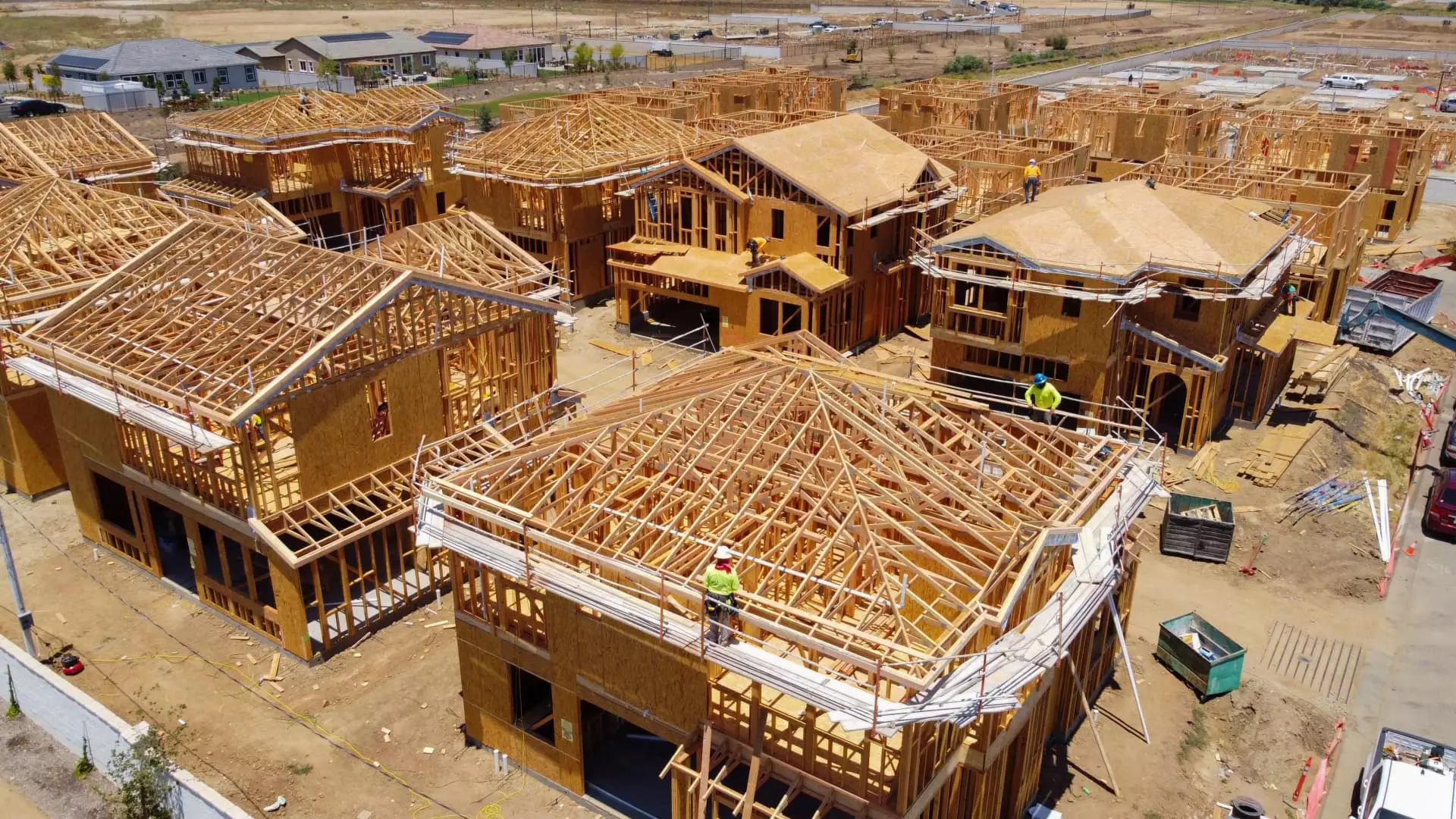As the financial world pivots its gaze towards the Federal Reserve’s imminent policy meeting, anticipation is palpable concerning a potential interest rate cut. Since October 2023, homebuilder stocks have steadily climbed, buoyed by initial signals from the Fed indicating a halt to interest rate hikes. However, this surge comes with warnings of overvaluation and cautious market sentiments. According to RBC Capital Markets’ analysis, the optimism surrounding these stocks is precarious, as they appear to be “priced for perfection.”
Mike Dahl, an analyst at RBC, emphasizes that while certain stocks within the homebuilder sector, such as Toll Brothers, Taylor Morrison Homes, and Tri Pointe Homes, show promise and are expected to outperform their peers, the underlying fundamentals of the industry remain inconsistent. For instance, Toll Brothers experienced a remarkable 46% stock rise in 2024, with Taylor Morrison and Tri Pointe also posting gains. The S&P Homebuilders ETF (XHB), tracking the performance of leading homebuilders, has surged nearly 26% this year.
A look into historical data reveals that homebuilder stocks have typically performed modestly during previous Fed interest rate cutting cycles. On average, these stocks only saw a 4% gain across the last five cycles. Interestingly, even in robust periods like the mid-1990s—when the Fed delicately navigated the economy towards a soft landing—gains were recorded at an average of 19%. Dahl’s analysis points out a crucial uncertainty: will initial rate cuts significantly influence market dynamics, or may they signal underlying economic distress?
This question becomes especially relevant as the market approaches the Fed’s meeting with a prevailing expectation of an interest rate cut, yet the scale of this cut remains contentious. market predictions, as per the CME Group’s FedWatch tool, indicate that traders are navigating a 59% chance of a 50 basis point reduction alongside a dwindling 41% for a conservative 25 basis point cut.
While traders rally for aggressive easing, many economists advocate for a more balanced approach to gauge economic stability. A major concern is that a hefty cut might imply that Fed officials are reacting to a rapidly deteriorating economy. Dahl articulates this sentiment by reminding investors that stock performance in previous cutting cycles has been bifurcated—dependent on whether the cuts could effectively avoid a looming recession.
In this environment, RBC warns against undue optimism, particularly for homebuilders whose valuations may be inflated. Companies like Lennar and KB Home are highlighted for potentially overexposing themselves in a market characterized by volatility. Analysts suggest that even with commendable stock performance—Lennar rising over 24% in 2024 and KB Home increasing by 38%—the fundamentals appear shaky, as evidenced by varied recommendations from analysts, most of whom have rated KB Home as a hold or sell based on projected price corrections.
One vital component that experts are closely monitoring is the relationship between declining mortgage rates and consumer purchasing behavior. As mortgage rates reach their lowest levels since early 2023, they are nearly a full percentage point lower compared to the same week last year. This shift potentially signifies a reinvigoration in the housing market, echoed by encouraging statistics, such as an 11% month-over-month increase in new home sales.
Analyst Matthew Bouley from Barclays brings attention to the mixed signals from the housing data landscape, noting rising inventories of single-family homes amidst sluggish starts. While recent declines in mortgage rates have enticed buyers, significant challenges remain including affordability issues and the balance of supply and demand.
Bouley asserts a cautious optimism; improving housing metrics could support sustained stock performance, especially among large builders like D.R. Horton, which possess the financial flexibility to offset broader market trends with strategic incentives. This adaptability is crucial in an era where market conditions are unpredictable.
The impending interest rate cuts herald both opportunities and challenges for homebuilder stocks. While prospects for select companies seem promising, experts insist that a tempered approach is vital. The market’s optimism may appear justified, but significant risks remain—a fact underscored by rising home inventories and fluctuating consumer demand.
As investors prepare for potential shifts in monetary policy, it is essential to look beyond immediate stock performance and consider the economic fundamentals that guide these trends. The dance of interest rates, economic vigor, and consumer confidence will continually shape the landscape for homebuilders in the months ahead. The road to recovery is likely to be a cautious one, necessitating vigilance and strategic foresight from both investors and industry stakeholders alike.

